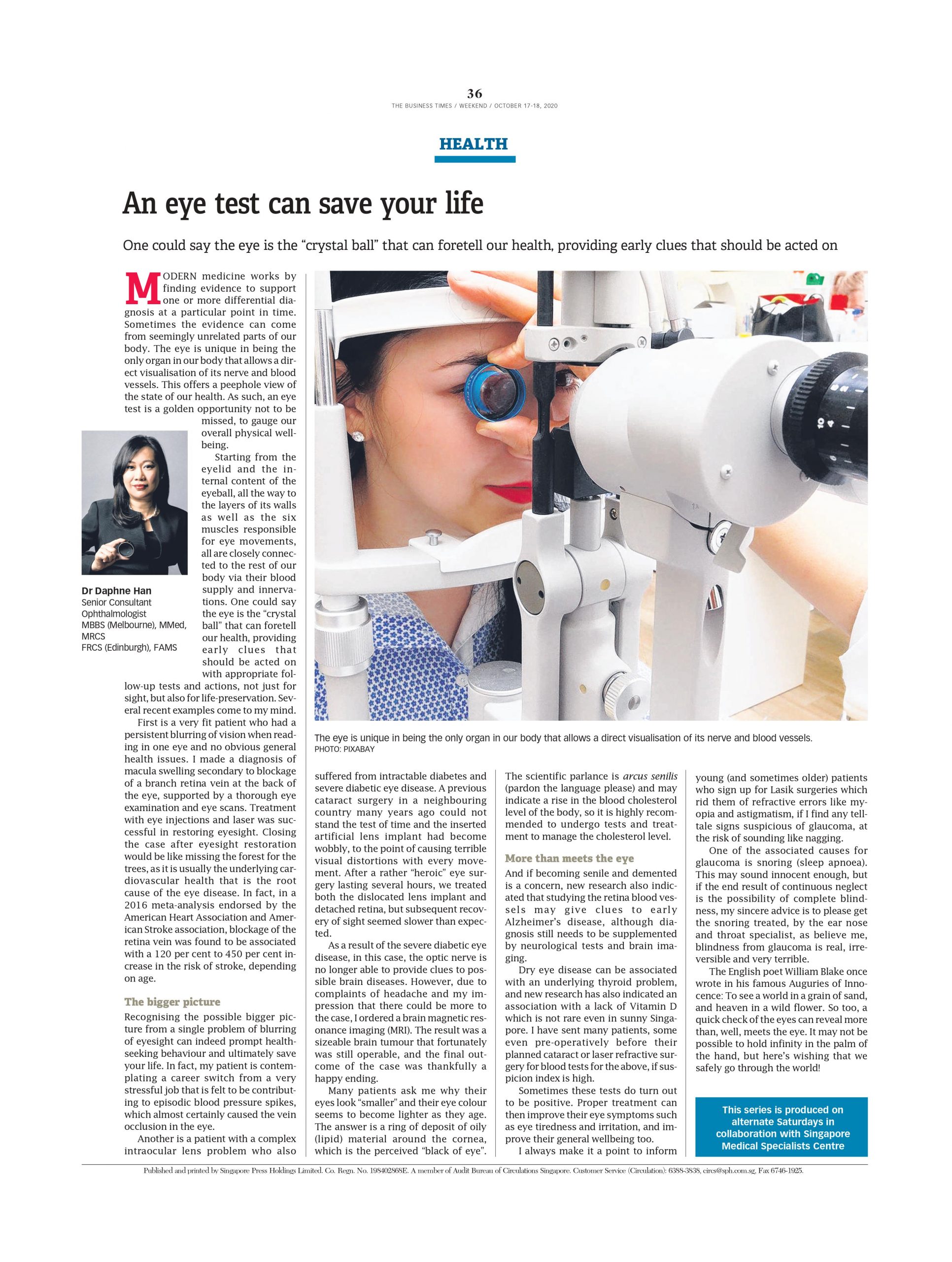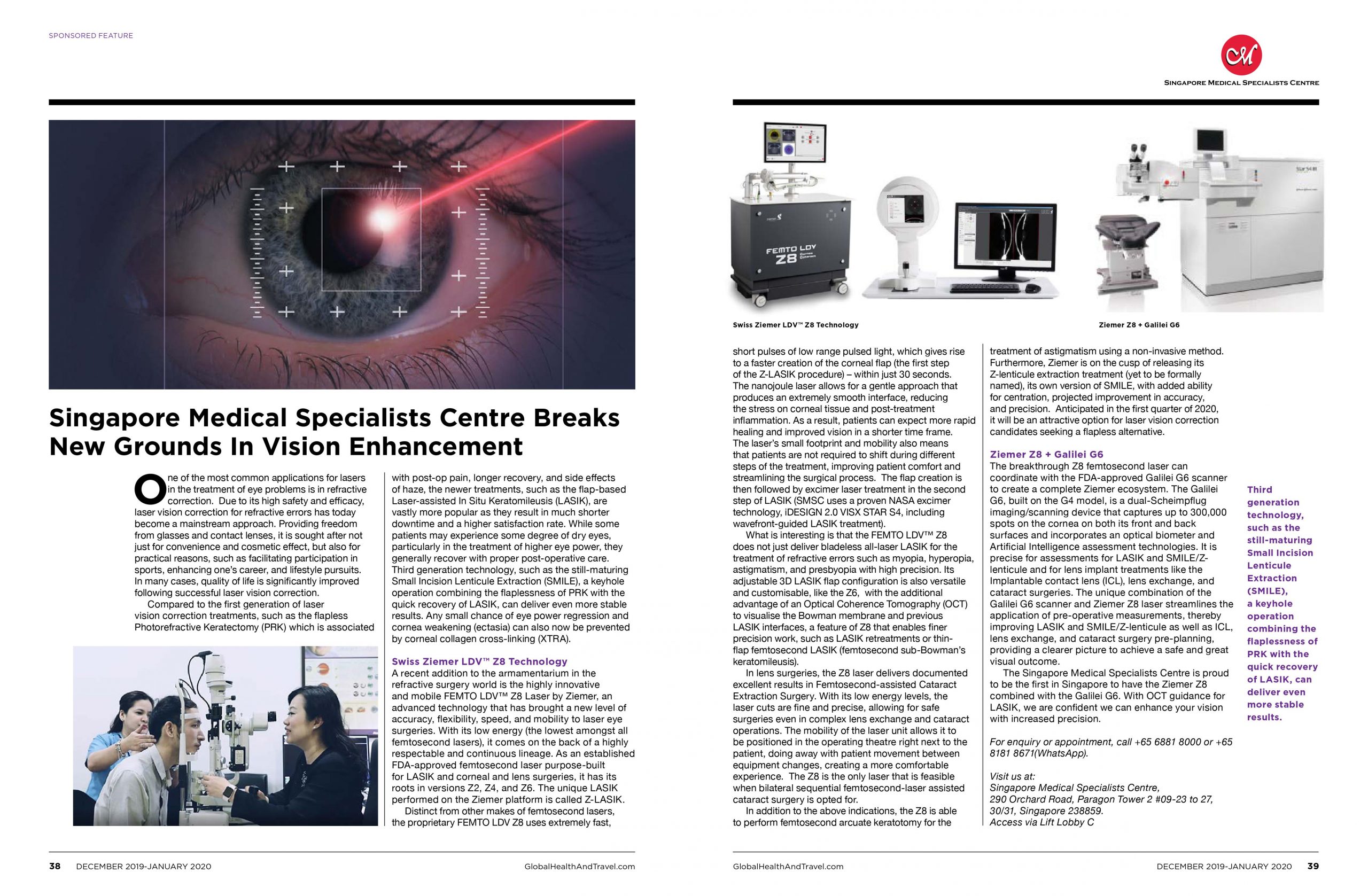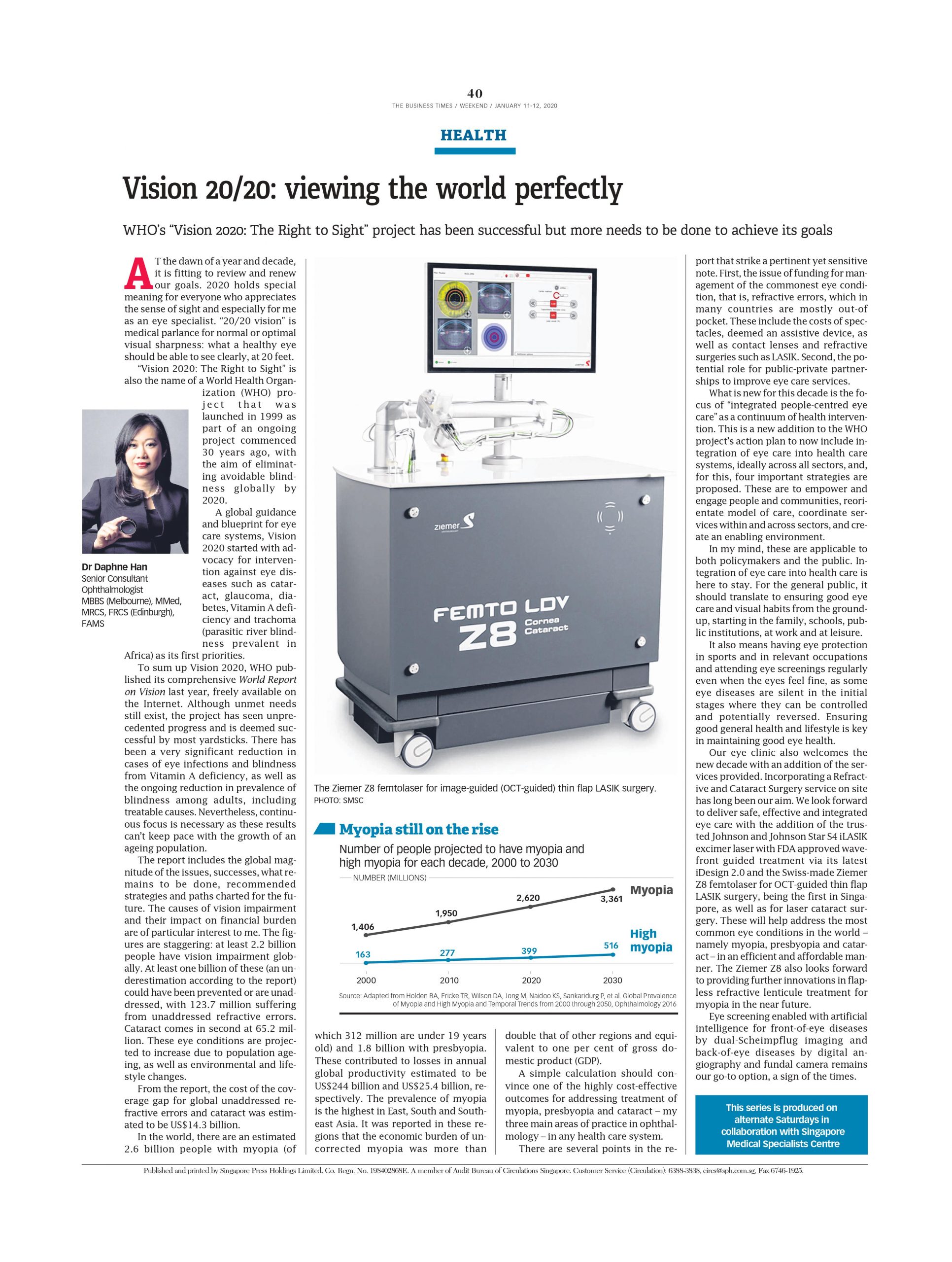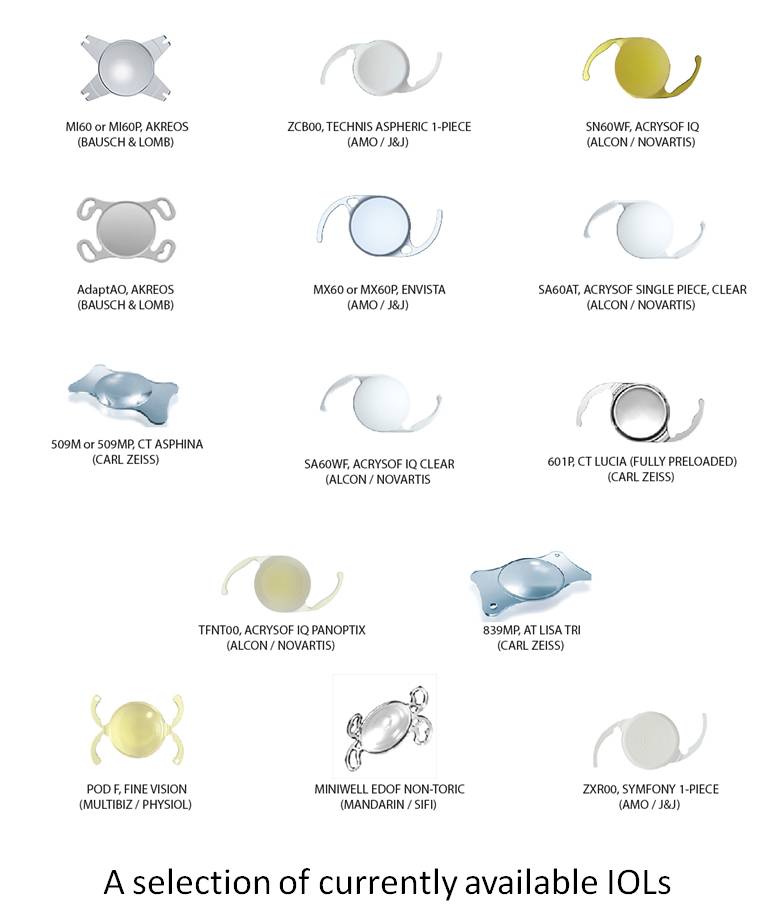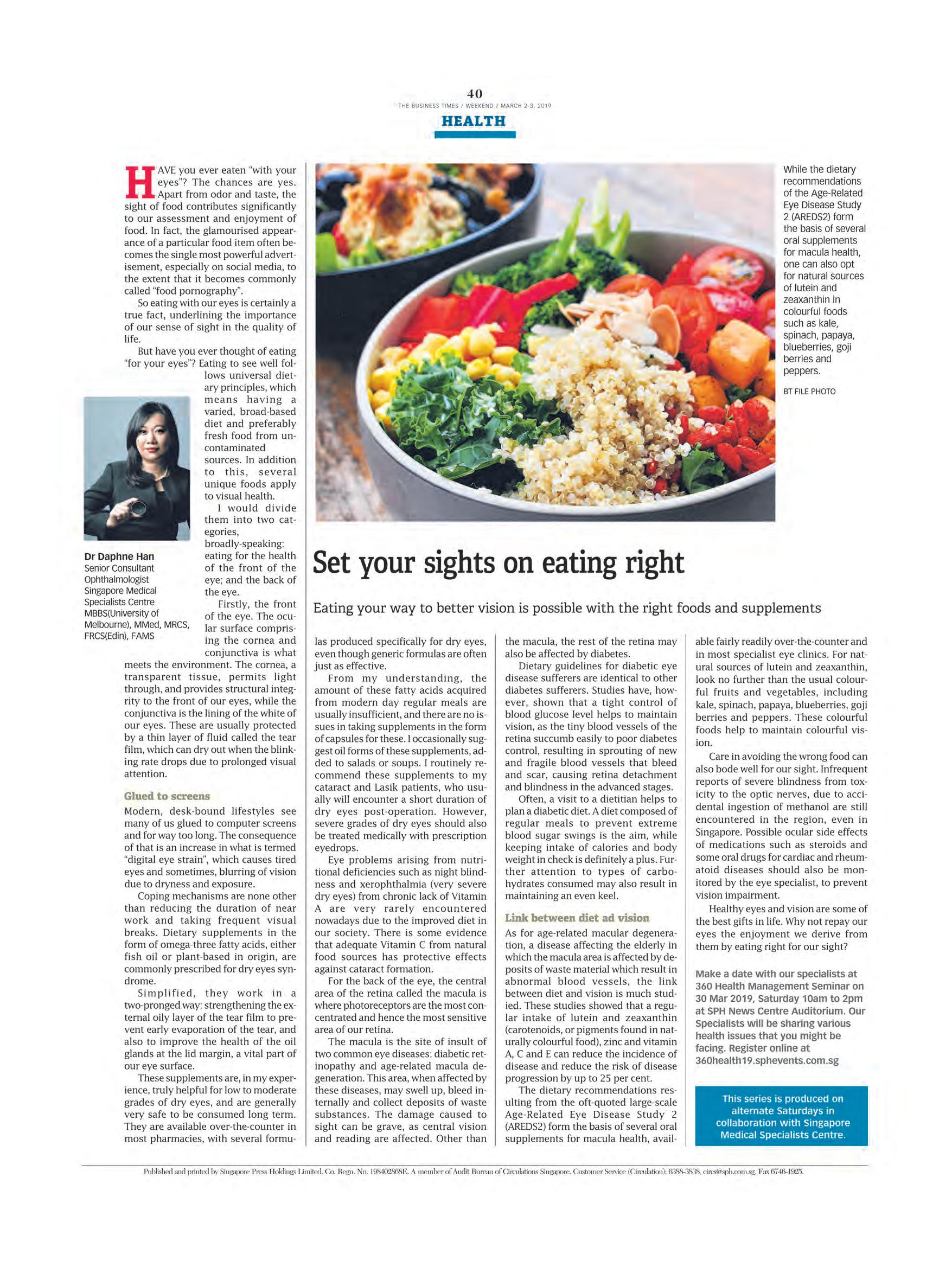Modern medicine works by finding evidence to support one or more differential diagnosis at a particular point in time. Sometimes the evidence can come from seemingly unrelated parts of our body. The eye is unique in being the only organ in our body that allows a direct visualisation of its nerve and blood vessels. This offers a peephole view of the state of our health. As such, an eye test is a golden opportunity not to be missed, to gauge our overall physical wellbeing.
Starting from the eyelid and the internal content of the eyeball, all the way to the layers of its walls as well as the six muscles responsible for eye movements, all are closely connected to the rest of our body via their blood supply and innervations. One could say the eye is the “crystal ball” that can foretell our health, providing early clues that should be acted on with appropriate follow-up tests and actions, not just for sight, but also for life-preservation. Several recent examples come to my mind.
First is a very fit patient who had a persistent blurring of vision when reading in one eye and no obvious general health issues. I made a diagnosis of macula swelling secondary to blockage of a branch retina vein at the back of the eye, supported by a thorough eye examination and eye scans. Treatment with eye injections and laser was successful in restoring eyesight. Closing the case after eyesight restoration would be like missing the forest for the trees, as it is usually the underlying cardiovascular health that is the root cause of the eye disease. In fact, in a 2016 meta-analysis endorsed by the American Heart Association and American Stroke association, blockage of the retina vein was found to be associated with a 120 per cent to 450 per cent increase in the risk of stroke, depending on age.
The bigger picture
Recognising the possible bigger picture from a single problem of blurring of eyesight can indeed prompt health-seeking behaviour and ultimately save your life. In fact, my patient is contemplating a career switch from a very stressful job that is felt to be contributing to episodic blood pressure spikes, which almost certainly caused the vein occlusion in the eye.
Another is a patient with a complex intraocular lens problem who also suffered from intractable diabetes and severe diabetic eye disease. A previous cataract surgery in a neighbouring country many years ago could not stand the test of time and the inserted artificial lens implant had become wobbly, to the point of causing terrible visual distortions with every movement. After a rather “heroic” eye surgery lasting several hours, we treated both the dislocated lens implant and detached retina, but subsequent recovery of sight seemed slower than expected.
As a result of the severe diabetic eye disease, in this case, the optic nerve is no longer able to provide clues to possible brain diseases. However, due to complaints of headache and my impression that there could be more to the case, I ordered a brain magnetic resonance imaging (MRI). The result was a sizeable brain tumour that fortunately was still operable, and the final outcome of the case was thankfully a happy ending.
Many patients ask me why their eyes look “smaller” and their eye colour seems to become lighter as they age. The answer is a ring of deposit of oily (lipid) material around the cornea, which is the perceived “black of eye”. The scientific parlance is arcus senilis (pardon the language please) and may indicate a rise in the blood cholesterol level of the body, so it is highly recommended to undergo tests and treatment to manage the cholesterol level.
More than meets the eye
And if becoming senile and demented is a concern, new research also indicated that studying the retina blood vessels may give clues to early Alzheimer’s disease, although diagnosis still needs to be supplemented by neurological tests and brain imaging.
Dry eye disease can be associated with an underlying thyroid problem, and new research has also indicated an association with a lack of Vitamin D which is not rare even in sunny Singapore. I have sent many patients, some even pre-operatively before their planned cataract or laser refractive surgery for blood tests for the above, if suspicion index is high.
Sometimes these tests do turn out to be positive. Proper treatment can then improve their eye symptoms such as eye tiredness and irritation, and improve their general wellbeing too.
I always make it a point to inform young (and sometimes older) patients who sign up for Lasik surgeries which rid them of refractive errors like myopia and astigmatism, if I find any tell-tale signs suspicious of glaucoma, at the risk of sounding like nagging.
One of the associated causes for glaucoma is snoring (sleep apnoea). This may sound innocent enough, but if the end result of continuous neglect is the possibility of complete blindness, my sincere advice is to please get the snoring treated, by the ear nose and throat specialist, as believe me, blindness from glaucoma is real, irreversible and very terrible.
The English poet William Blake once wrote in his famous Auguries of Innocence: To see a world in a grain of sand, and heaven in a wild flower. So too, a quick check of the eyes can reveal more than, well, meets the eye. It may not be possible to hold infinity in the palm of the hand, but here’s wishing that we safely go through the world!
